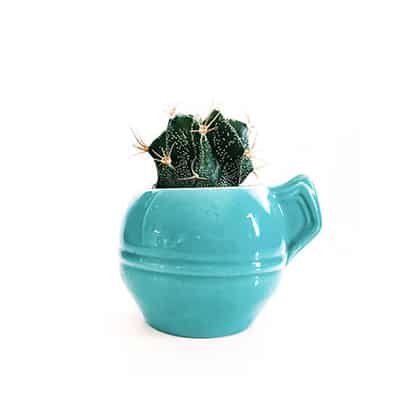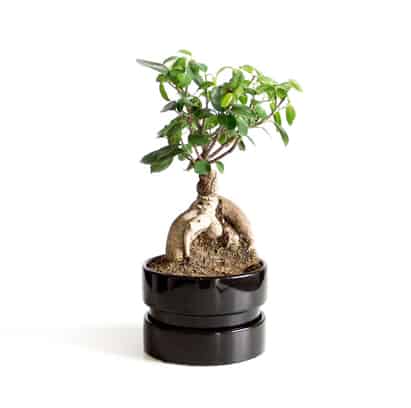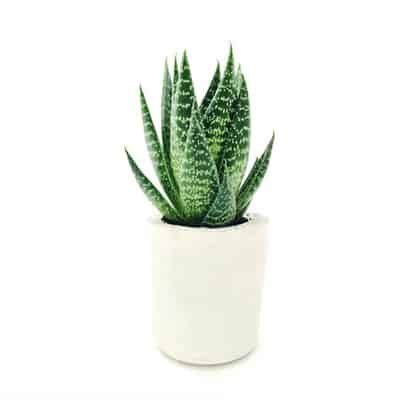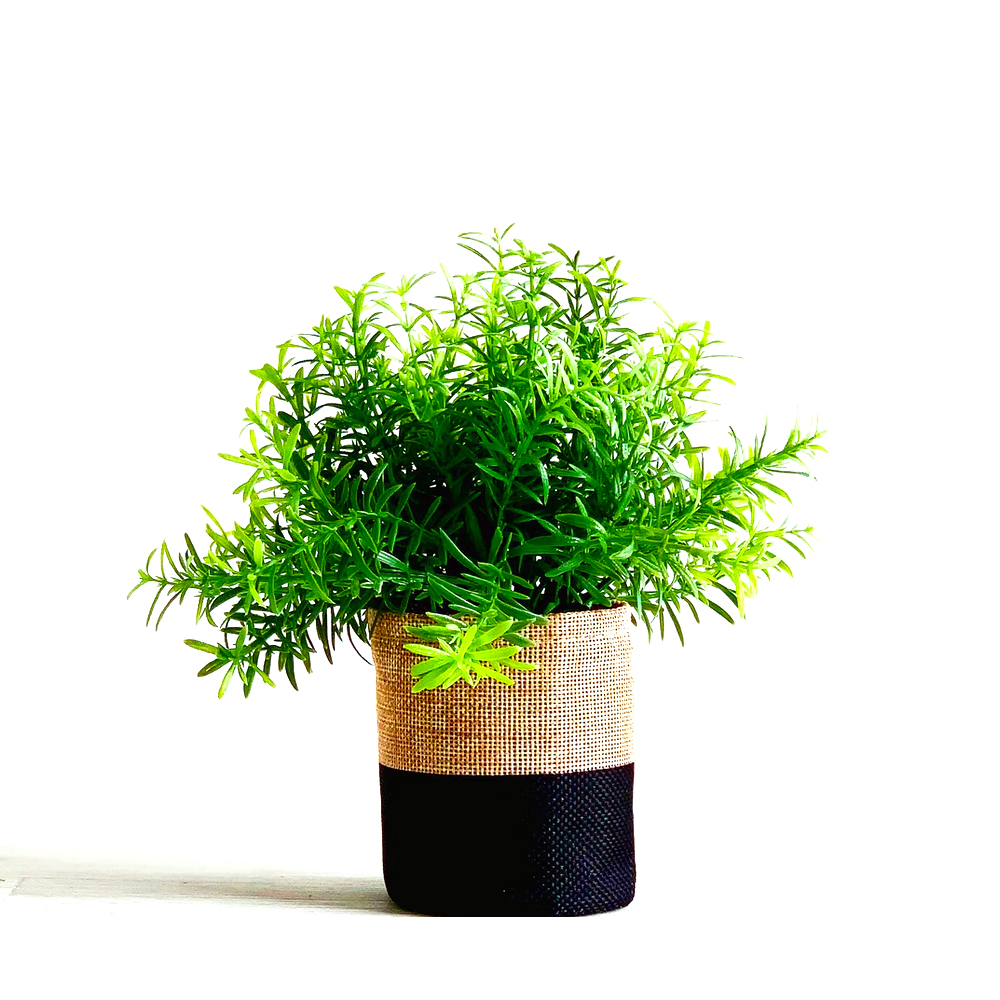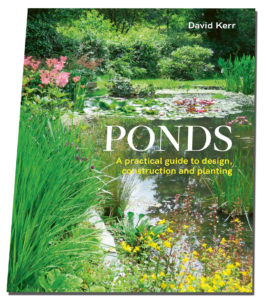Advice and information on...
Blanket Weed Control
What is blanket weed and why do I have it?
Blanket weed is mass of algae growing together in strings. Just as weeds will rapidly appear and colonise bare soil in the garden, aquatic algae are some of the fastest growing organisms on the planet and will increase at a phenomenal rate if conditions favour growth. These conditions are:
• Strong sunlight
• Dissolved nutrients in the water
These conditions most often occur in Spring, when nutrient levels have increased during winter but the larger plants have not yet started into active growth and are not using these nutrients.
Where do these nutrients come from?
The main sources are:
• Decaying plant material in the pond from fallen leaves and the pond plants themselves.
• Waste products produced by fish and other animals (vastly increased if fish are fed pelleted feeds)
• Dissolved nutrients and mud washed off surrounding land and/or entering with stream inflows.
How do I get rid of it?
The only long term answer is to manage the levels of nutrients and sunlight entering the pond. This takes a considerable time to achieve and is why it is often new ponds which are worst affected. It is generally harder to establish a balance in a smaller pond, and next to impossible if the pond contains a lot of fish being fed artificial feeds. It is very important with larger “on-stream” ponds not to allow the whole stream to run through the pond but keep through flow to an absolute minimum and bypass excess or flood water around the pond. This will vastly reduce the amounts of nutrients finding their way into the pond.
The basic principles are to establish sufficient marginal, benthic and floating plants to take up excess nutrients and shade the bottom of the pond from excessive sunlight. Please note that this does not mean that the pond itself should be under a tree or similar shady position as the pond plants themselves need sunlight to thrive. It is the pond plants that should provide the shade. Ideally a small pond should have a surface cover of floating leaves and shade provided by taller marginals of 50-75%. This proportion can be reduced as the pond increases in size to 40-50% not including areas over 1.8 metres deep. Any plants which have floating leaves, such as water lilies, frogbit and water hawthorn are useful here. Similarly, plants which grow out from the sides in a raft such as amphibious bistort, bog arum, bogbean and marsh cinquefoil help too. Oxygenating plants also help since they are also fast growing and will compete for nutrients, often before the larger plants get going in Spring. It is important to understand that the excess nutrients are only locked in while plants are actively growing, and can only be removed from the system by removing plant material either live or dead.
Are chemical controls available?
There are several types of product on the market which claim to prevent, reduce or eradicate blanket weed.
• Barley straw or extract of barley straw: this is a worthwhile remedy but does take time to have an effect. The breakdown products of decaying barley straw do seem to reduce the vigour of blanket weed but are unlikely to deal with a heavy established problem in the first year. Cheap and easily available.
• Mineral products: some of these claim to deprive the weed of certain essential nutrients but are rather vague about the exact methodology. Variable results in my experience, but worth a try. Expensive for larger ponds but usually quite effective in smaller ones.
• Products based on bleach compounds such as Chloramine: usually quite effective but can leave a residue of brown sludgy material which is reluctant to disappear and can be almost as unsightly as the weed in some cases. Again worth a try.
• Dyofix: this is a soluble non-toxic dye and works by preventing the red wavelengths of light needed by the weed from reaching the bottom of the pond. It comes in various forms depending on size of pond but isn’t really suitable for very small ponds. It is particularly effective for larger, deeper ponds and is a cost effective solution for these.
I’m confused about what I should do first!
It’s far better to introduce sufficient plants in the first place to avoid the problem developing, but unfortunately many people economise on the initial planting, which results in the blanket weed problem getting worse and worse, and then waste money buying new plants to dump in among the blanket weed in the hope that they will magically cure the problem. Sufficient plants will allow a balance to be achieved but need to have a reasonably clear start. This is especially the case with oxygenators which are apt to become smothered if dropped into a bad infestation of blanket weed.
In smaller ponds it is worth removing as much as possible manually with a net or by twiddling a cane among it to wind it up. Badly infested oxygenators will need to be removed too. Siphon or vacuum out as much as possible of any organic material on the bottom of the pond. Add floating plants such as water soldiers or frogbit, or plants with floating leaves, to provide shade. Put in some barley straw in nets which will gradually help.
In bigger ponds it is not really practical to remove it and you are more likely to propagate it by stirring things up. If there is a large amount of organic material on the bottom of the pond then you will need to remove the majority of that to have a fighting chance. Unfortunately this can initially stir up previously locked-in nutrients, but will be beneficial in the longer term. It’s generally better to take a relaxed approach and live with it if you have already tackled any silt or sediment issues; the problem is generally then cyclical. Dyofix (above) can be an effective solution, especially if applied early in the year before the weed builds up.
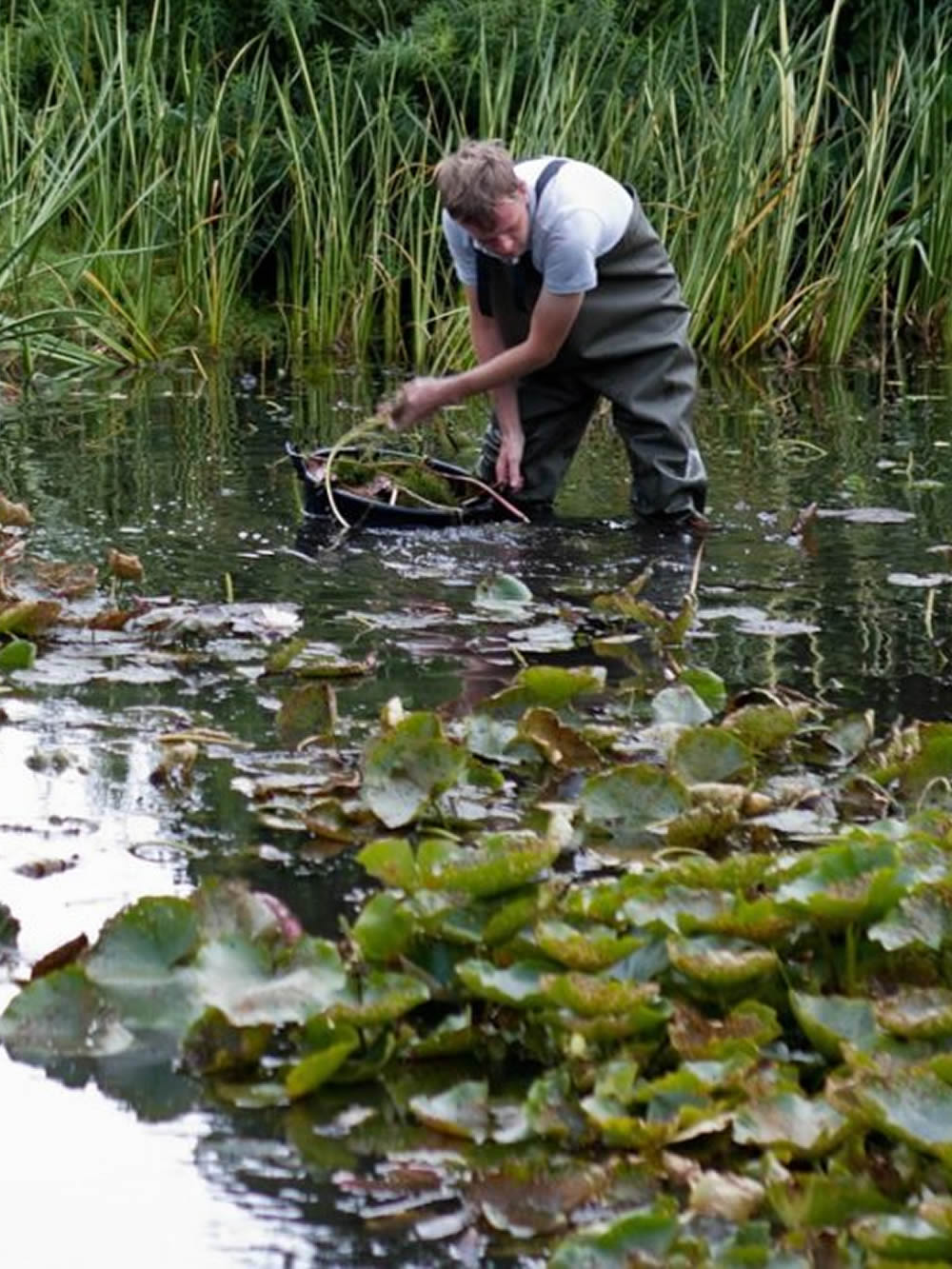
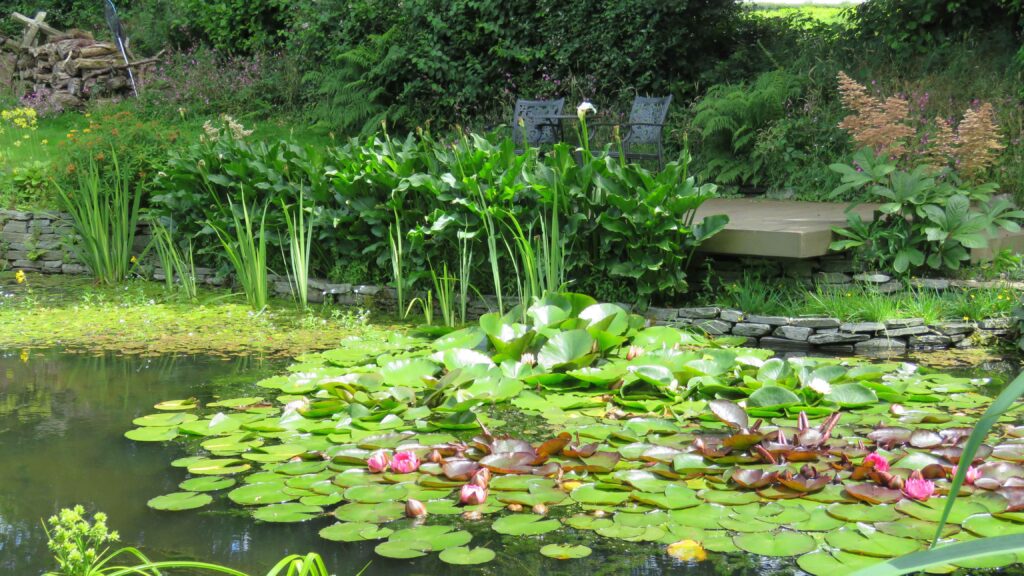
GET YOUR SIGNED COPY OF A NEW BOOK
AUTHOURED BY DAVID KERR OF DEVON POND PLANTS
This book will tell you all you need to know about the design, construction and planting of ponds of all sizes. Crammed with useful information and plenty of helpful pictures, this guide will help you to avoid all the common and costly mistakes and create a successful and beautiful pond. Due for release on 6 September 2023 and available from all the usual outlets, a signed copy can be ordered direct from this website.
If you would like a signed copy please indicate this in the Notes box on the order form.
Customer Reviews
What Our Customers Say
MR P F – 2 March 2024
Hi David,
The plants were delivered yesterday afternoon and I managed, despite the heavy rain, to plant all 40 of them before nightfall! You kindly warned me that some of plants at this time of year would be in their dormant stage and to expect some brown or yellow leaves and that their “kerb appeal would be low”. To my delight all the plants were in an excellent condition with no discoloured leaves in sight. All the dormant plants had good root structure. In summary the “pond side appeal”was great!
I also appreciated the very informative labels which came with the plants. The planting itself was greatly assisted by the excellent information and advice you have provided, both on your website and in your superb book.
Communication, ordering, packaging and delivery were all straight forward, prompt and efficient. Devon Pond Plants have provided me with a wonderful service. I am now hoping the spring weather will be as good.
Many thanks,
PF
MR P F – 2 March 2024
Hi David,
The plants were delivered yesterday afternoon and I managed, despite the heavy rain, to plant all 40 of them before nightfall! You kindly warned me that some of plants at this time of year would be in their dormant stage and to expect some brown or yellow leaves and that their “kerb appeal would be low”. To my delight all the plants were in an excellent condition with no discoloured leaves in sight. All the dormant plants had good root structure. In summary the “pond side appeal”was great!
I also appreciated the very informative labels which came with the plants. The planting itself was greatly assisted by the excellent information and advice you have provided, both on your website and in your superb book.
Communication, ordering, packaging and delivery were all straight forward, prompt and efficient. Devon Pond Plants have provided me with a wonderful service. I am now hoping the spring weather will be as good.
Many thanks,
PF
MR P F – 2 March 2024
Hi David,
The plants were delivered yesterday afternoon and I managed, despite the heavy rain, to plant all 40 of them before nightfall! You kindly warned me that some of plants at this time of year would be in their dormant stage and to expect some brown or yellow leaves and that their “kerb appeal would be low”. To my delight all the plants were in an excellent condition with no discoloured leaves in sight. All the dormant plants had good root structure. In summary the “pond side appeal”was great!
I also appreciated the very informative labels which came with the plants. The planting itself was greatly assisted by the excellent information and advice you have provided, both on your website and in your superb book.
Communication, ordering, packaging and delivery were all straight forward, prompt and efficient. Devon Pond Plants have provided me with a wonderful service. I am now hoping the spring weather will be as good.
Many thanks,
PF
MR P F – 2 March 2024
Hi David,
The plants were delivered yesterday afternoon and I managed, despite the heavy rain, to plant all 40 of them before nightfall! You kindly warned me that some of plants at this time of year would be in their dormant stage and to expect some brown or yellow leaves and that their “kerb appeal would be low”. To my delight all the plants were in an excellent condition with no discoloured leaves in sight. All the dormant plants had good root structure. In summary the “pond side appeal”was great!
I also appreciated the very informative labels which came with the plants. The planting itself was greatly assisted by the excellent information and advice you have provided, both on your website and in your superb book.
Communication, ordering, packaging and delivery were all straight forward, prompt and efficient. Devon Pond Plants have provided me with a wonderful service. I am now hoping the spring weather will be as good.
Many thanks,
PF


